5 outdoor weather stations to help you make the right gardening choices
Everything you need to know about smart weather stations
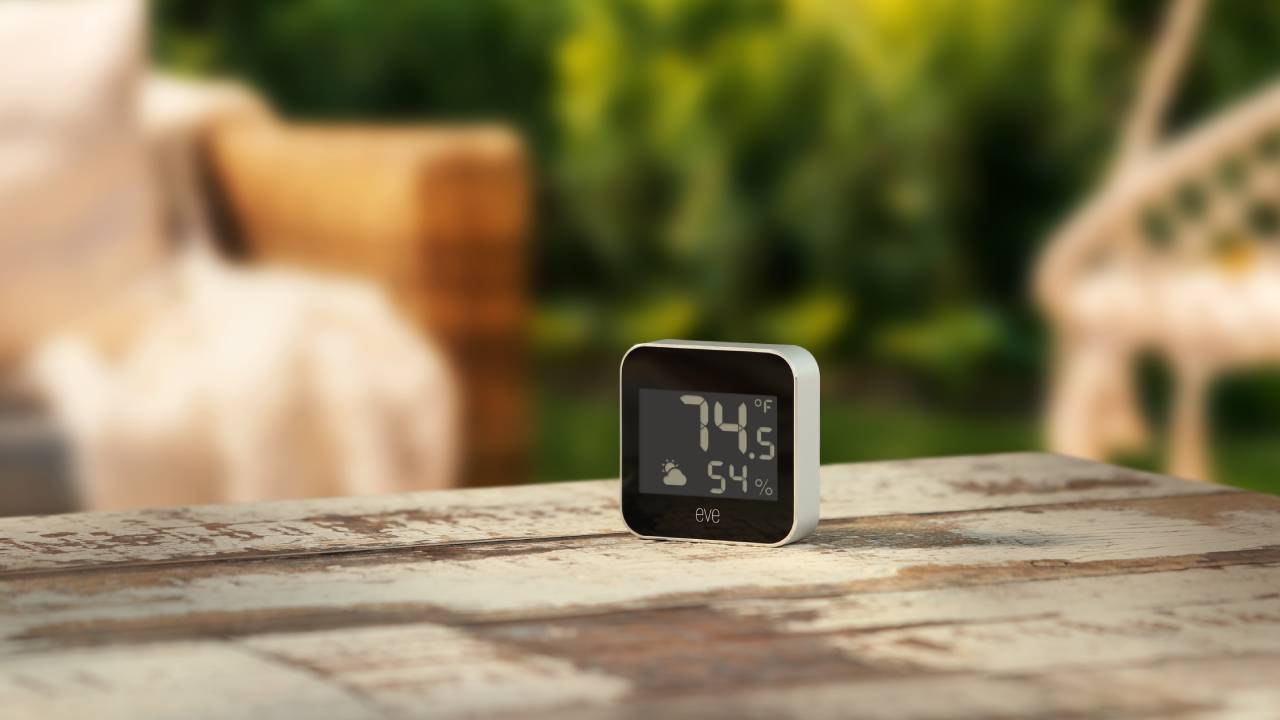

The Brits’ obsession with the weather is well known around the world. You might argue that discussing it is a national pastime, and it’s now as much part of our psyche as a Sunday roast. But it’s for a very good reason: we have a lot of it.
As BBC weatherman Michael Fish discovered ahead of the Great Storm of 1987, it can be wholly unpredictable. But for gardeners, it’s more than just choosing whether to slip on a pair of wellies or reach for the Crocs. It can govern what you plant, where you plant it, and the insecticides or fertilisers you might need to use. It’s a big deal.
TV weather updates are too general to be of much use to the avid gardener; weather websites aren’t granular enough. And that’s where a weather station comes in.
Which weather station is right for you?
1. Davis Vantage Pro2 Wireless Weather Station
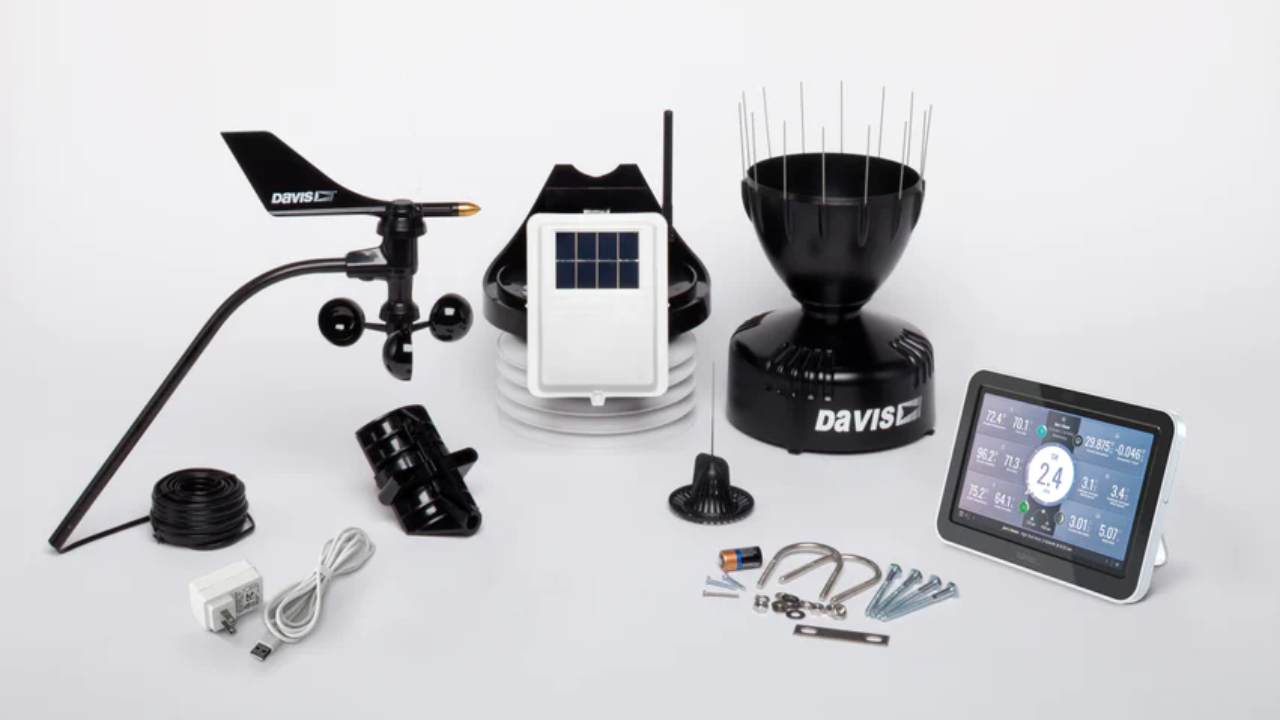
With a price tag close to £600 / $600, the Davis Vantage Pro 2 certainly ain’t cheap, but you might consider it to be the Rolls-Royce of weather stations. It’s aimed at the serious hobbyist and pro weather enthusiasts, and extra accessories such as a solar radiation sensor will excite even the most hardened meteorological maestro.
In its most basic wired guise, the Vantage Pro 2 gathers real-time data every 2.5 seconds on wind speeds up to 200mph, as well as temperature and humidity, barometric pressure, rainfall and many more paremeters aside. You’ll pay $100 more for a wireless version, and a further $395 for a console display or for a link to upload data to Davis’ WeatherLink Cloud.
As you might expect, it’ll take some time to set up, and it’s not the most attractive of weather stations, but as its huge network in some pretty inhospitable locations attests, it’s highly accurate and should be built to last. I’d recommend the $695 solar-powered wireless version, unless you’ve a handy mains connection nearby.
2. Ambient Weather WS-2902 Osprey Home Wi-Fi Weather Station
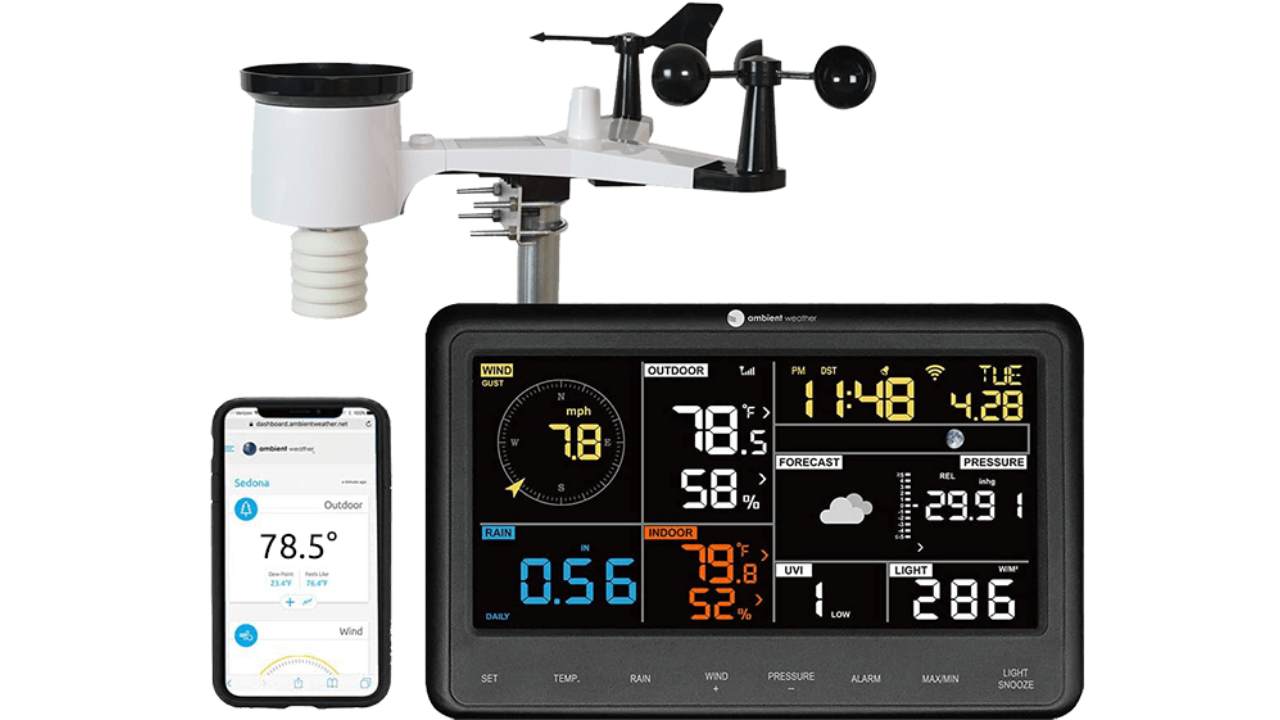
Key to the Osprey’s appeal is its ability to hook into a range of smart home tech – and that it does this out of the box, without the need for costly extras. That means it can work with IFTTT so weather events can trigger a range of smart home functions via Amazon Alexa or Google Assistant.
Get all the latest news, reviews, deals and buying guides on gorgeous tech, home and active products from the T3 experts
It’ll provide push notifications for when high or low parameters are exceeded for every condition it tracks – which includes most of what you’d reasonably need, including wind speed, direction and chill, temperature, rainfall, barometric pressure and dew point.
All this is displayed through an LCD console which connects to the weather station via RF, and the console itself connects to the Wi-Fi. That means the solar-powered (with battery back-up) station can be positioned up to 100 metres from the console so it can be placed in the optimum position in your garden – and not defined by where your Wi-Fi is strongest.
As well as showing real time data on the console, the Osprey can connect to AmbientWeather.net, which allows you to customise dashboards, generate reports and even generate email or SMS alerts based on hyperlocal information.
3. AcuRite Iris Weather Station with Wireless Display
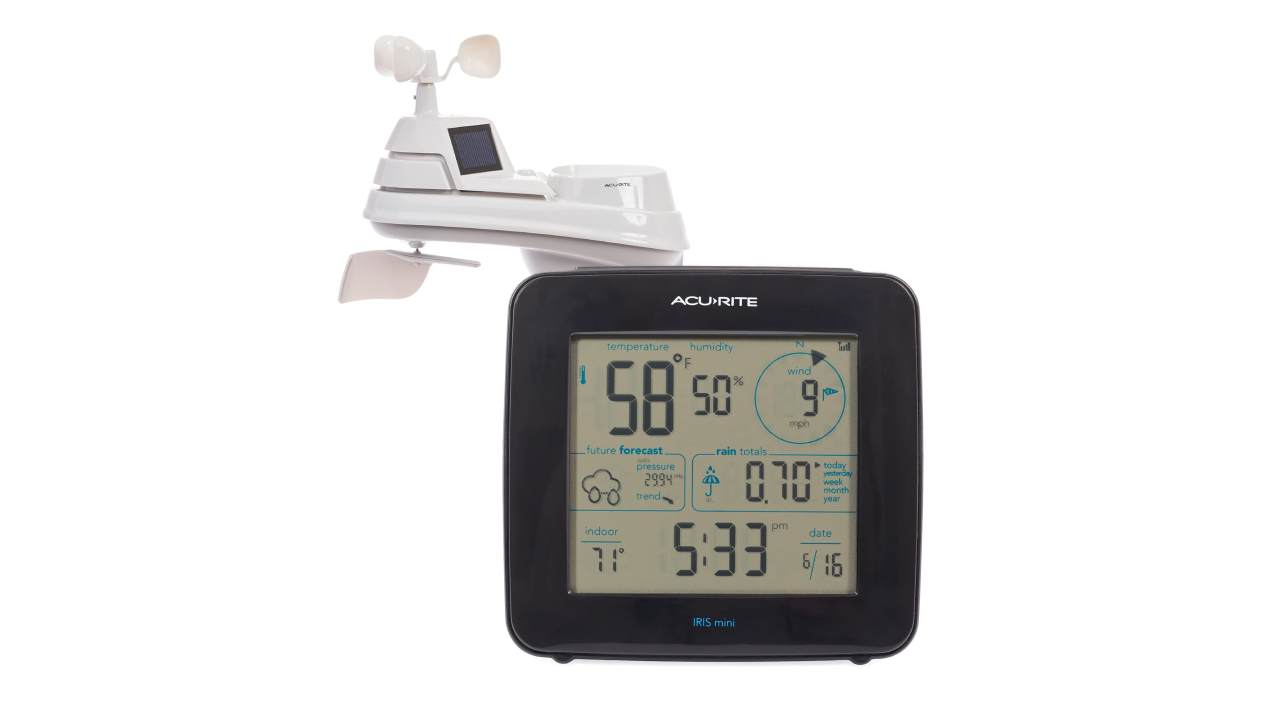
While there are more advanced versions of the AcuRite Iris, it’s the entry-level version that will have the most appeal for those looking for off-grid monitoring. That’s because both the weather station and console are powered by AA batteries, and the weather station features a solar panel that powers internal fans to maximise ambient temperature accuracy.
As such, the display has an old-school LCD display, but still displays the system’s indoor and outdoor temperature, outdoor humidity, wind speed and direction, rainfall, and barometric pressure measurements. It can provide 12-hour hyperlocal forecasts based on this information, and alarms can be set to alert you to sudden shifts in weather patterns.
Many of its measurements are stored, allowing the tracking of historical data over the day, past week, month or year. Of course, with a far lower price tag, the Iris will only transmit data every 18 to 36 seconds, but for the gardener, that should be of little concern. Like the Ambient Weather station, the Iris’s weather station has a range of 100 metres – more than enough for the average UK garden.
4. Bresser Smart Garden Smart Home Irrigation System
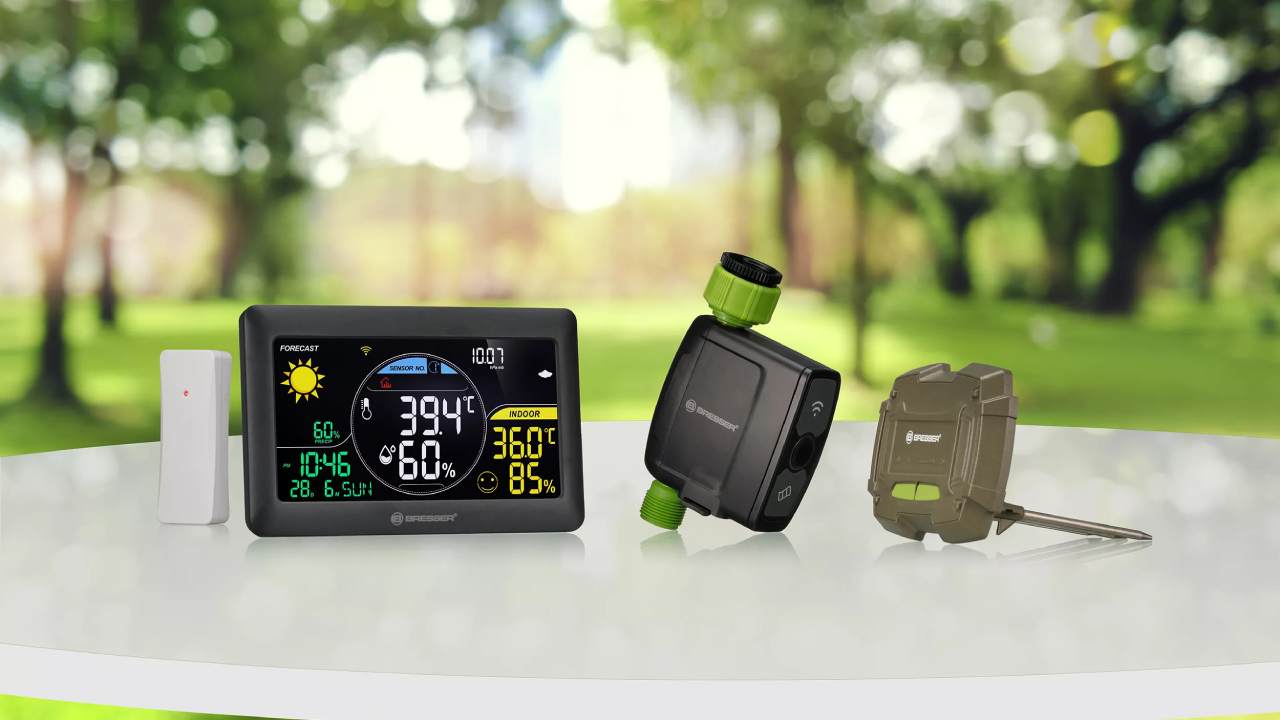
While smart home irrigation systems are available elsewhere, and many are compatible with more advanced weather stations, there’s much to be said for everything arriving in the same box, from the same brand. Step forward, Bresser.
It doesn't have the breadth of features or hyperlocal monitoring of many other systems, but for the average gardener, temperature and outdoor humidity along with a frost alarm which triggers when the temperature plunges past 3degC should be plenty. These are delivered through a wireless sensor, while further sensors built into the unit itself measure indoor temperature and humidity.
Its trump card is its smart watering system. This can irrigate or mist two separate areas based on configurable schedules, and has a rain delay function that will pause watering for 24 hours. It also features a wireless soil sensor which can automatically adjust the watering schedules accordingly.
5. Ecowitt HP2564 WittBoy Pro

The intriguingly named WittBoy Pro is another fully-functioned compact and smart-looking weather station which boasts a wide range of parameters, from light intensity and UV level, as well as all the usual you can expect from a mid-range unit.
It does, however, have a few novel features, such as a haptic rainfall sensor rather than a traditional rain collector which should be as maintenance-free as it’s possible to get. The full-colour console is clear and data-packed, and data can be accessed via the Ecowitt app or website. It even comes with spikes to prevent birds perching on the unit.
But it’s the level of customisation that’s available that really impresses, making it easy for gardeners with very specific requirements. Extra-cost highlights include wireless soil moisture meters, air quality sensors, multi-channel temperature probes, leaf wetness sensor and – and even a lightning detector.
Weather stations FAQs
Why using a weather station is beneficial to gardeners
A smart weather station can measure all manner of meteorological data, ranging from temperature, humidity, rainfall, to wind speed and barometric pressure, all specific to your garden. Mrs Jones at number 42 might be experiencing cooler climes in her tree-lined garden, but in your rather more exposed vegetable patch, the atmospheric conditions might look very different. And that can help you make the right gardening decisions.
Weather stations can deliver real-time insight based on empirical data, rather than estimates that fail to consider microclimates. For example, the stream at the bottom of your garden could be making a real difference; the actual conditions in an urban area could look very different from those on the rural edges.
Understanding that can help you optimise your watering schedules, taking into account actual rainfall and humidity data to help you avoid overly saturating the soil, for example. Conversely, predicting a dry spell means you can reduce your water use. This is particularly useful if you’re using an automatic irrigation system or a smart sprinkler.
Similarly, the data can help you to better plan planting, and if you grow fruit or veg, when to harvest as well. You’ll also be able to better predict unusual or extreme weather events, so you can move or secure delicate plants before strong winds hit, or cover plants before a heavy frost. A weather station may even be a line of defense against moulds and pests, buying you time to take preventative measures sooner.
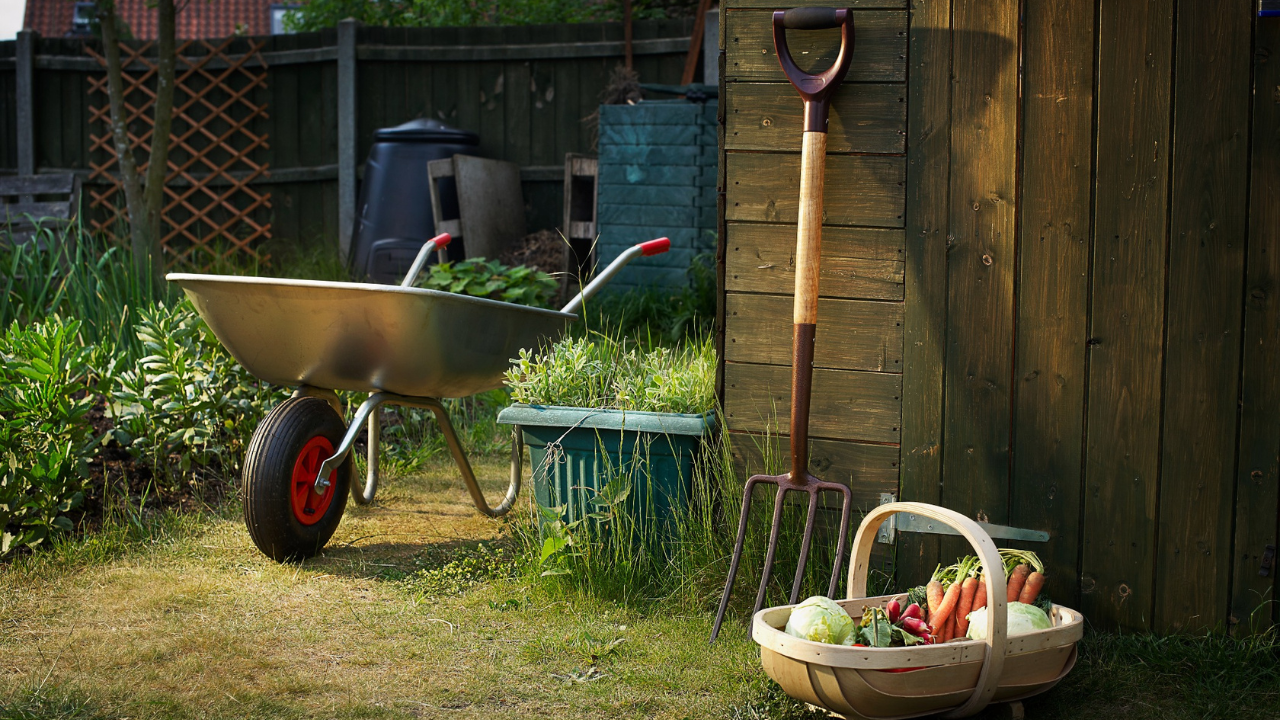
What to look for in a weather station
Accuracy, accuracy, accuracy. If your weather station isn’t accurate, you may as well stare at the clouds or check to see if the local cow herd is laying down. Generally speaking, you’ll want your weather station to have good quality sensors from a respected brand, but where they’re positioned is equally important – you won’t want your anemometer (wind speed gauge) blasting rain water into your rainfall collector, for example.
Speaking of which, you’ll want to ensure there’s a self-emptying mechanism in the rain collector, otherwise you’ll continually get false readings. Even the slightest discrepancy here can give you an entirely incorrect view of your rainfall.
Many weather stations provide smartphone connectivity to provide real-time monitoring and data logging, which is particularly useful for gardeners away from home, or those looking to track their allotment. Some even have push notifications for important or severe events, while others have the ability to log data over periods of time and plot trends.
Sharing data with other platforms, such as Weather Underground, can help keen meteorologists track weather conditions more accurately, which can be particularly useful in remote areas. Some weather stations can integrate with smart gardening systems or even smart home systems: some of Bresser’s models are compatible with the Tuya Smart Home app, and can trigger home lighting or control central heating remotely.
A decent battery life is pretty much essential, but many have solar panels meaning you’ll not need a constant supply of double-As.
The number of features you can expect will largely come down to price, but you can expect most to monitor wind speed and direction, rainfall and barometric pressure. But others can monitor the UV index, provide frost alerts and measure wind chill.
Stuart is a highly experienced journalist with a track record at some of the UK’s most prestigious automotive titles, including What Car?, Autocar and Auto Trader. On the way, he’s reviewed pretty much every important car on the road – and is equally adept at understanding a wide range of related products, from cool boxes to digital multimeters. When not behind the wheel, Stuart has a huge interest in home improvement, and loves nothing more than spending the weekend on the tools. His latest project is fettling a workshop to house his growing passion for woodworking.
You must confirm your public display name before commenting
Please logout and then login again, you will then be prompted to enter your display name.
